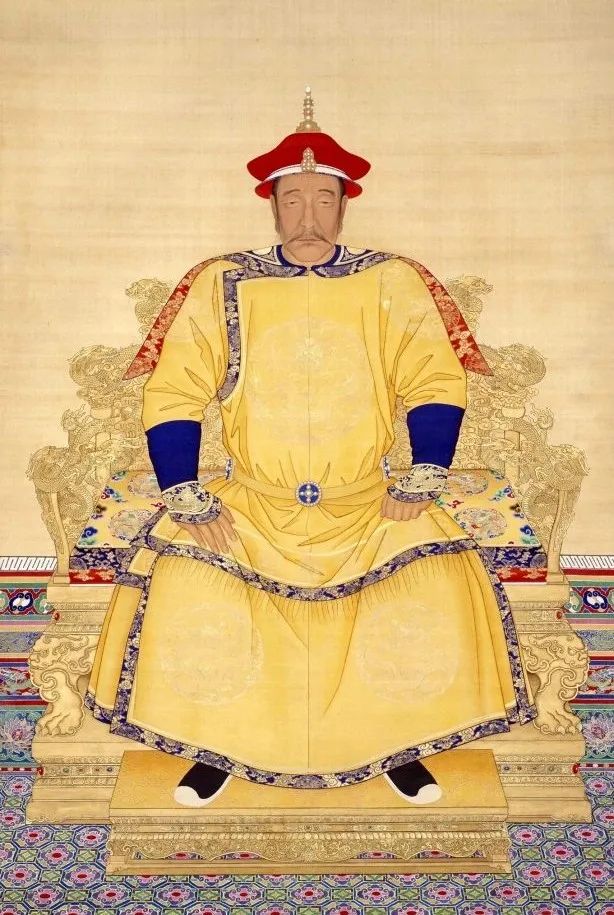History is full of twists, betrayals, and grand narratives that shape the fate of nations. One such moment occurred in 1583, when an incident of “mistaken killing” set in motion a series of events that would eventually lead to the fall of the Ming Dynasty and the rise of the Qing Empire. This is the story of Nurhaci, a man whose thirst for revenge ignited a war that changed China forever.

A Family Tragedy That Changed History
In the late 16th century, the Ming Dynasty ruled over China, while various Jurchen tribes, including Nurhaci’s clan, occupied the northeastern frontier. In 1583, a Jurchen leader named Atai allied with Mongol forces and planned to raid the Ming-controlled Liaodong region. The Ming general Li Chengliang responded swiftly, launching an attack on Atai’s stronghold, Gule Fortress.
Nurhaci’s grandfather, Giocangga, and his father, Taksi, entered the besieged fortress in an attempt to rescue their relatives trapped inside. However, they were caught in the chaos when Atai’s followers were tricked into surrendering the city. In the ensuing slaughter, Giocangga and Taksi were killed.
According to Qing historical records, they were “mistakenly killed” during the battle. However, Ming sources tell a different story. They claim that Giocangga and Taksi actually served as guides for the Ming army in the attack on Gule Fortress, suggesting they may have been viewed as traitors by their own people. Regardless of the true version, for the young Nurhaci, the deaths of his father and grandfather at the hands of the Ming fueled an unrelenting desire for vengeance.
From Merchant to Warlord
After the battle, the Ming returned the bodies of Giocangga and Taksi to Nurhaci and attempted to appease him with gifts: thirty imperial edicts and thirty horses. They even granted him his grandfather’s old title, making him the new leader of his tribe. For years, Nurhaci played the role of a loyal Ming vassal, even engaging in trade with the empire. But beneath the surface, he was preparing for something far greater.
Nurhaci began consolidating power, uniting the Jurchen tribes under his rule. With just 13 sets of armor and a handful of warriors, he embarked on a decades-long campaign that would transform his people into a formidable military force.
One of his greatest innovations was the Eight Banner System, which reorganized his forces into a highly disciplined military and social structure. It combined loyalty to the state with tribal hierarchy, ensuring that all Jurchens fought under a unified command. The Eight Banners would later become the backbone of the Qing Dynasty’s military dominance.
The Seven Grievances and War Against the Ming
By 1616, Nurhaci had declared himself the ruler of the “Later Jin” (later renamed the Qing Dynasty) and openly challenged the Ming’s authority. Three years later, he issued the famous “Seven Grievances”, a declaration listing the injustices he had suffered at the hands of the Ming—first and foremost, the murder of his father and grandfather.
With that, war was inevitable.
Nurhaci’s forces swept across Ming territory, defeating the empire’s armies with superior tactics and discipline. In 1619, at the Battle of Sarhu, Nurhaci decisively crushed a Ming army of nearly 47,000 men using a strategy of focused assaults. His famous battle doctrine, “Attack from one direction, regardless of how many directions the enemy comes from,” allowed him to systematically annihilate the scattered Ming forces. The victory cemented his dominance over the region.
The Road to the Qing Dynasty
Nurhaci’s conquests continued, and he moved his capital from Hetu Ala to Liaoyang, then later to Shenyang. His dream of conquering the Ming heartland, however, would remain unfinished. In 1626, at the age of 68, Nurhaci died—some say from wounds inflicted by a powerful Ming cannon during the Battle of Ningyuan. Others believe he succumbed to an illness.
Despite his death, his legacy endured. His son, Hong Taiji, completed his work by formally establishing the Qing Dynasty in 1636. Less than a decade later, in 1644, the Qing forces marched through the Great Wall and seized Beijing, marking the final downfall of the Ming.
A Legacy Carved in Stone
Nurhaci was laid to rest in Fuling, located northeast of modern-day Shenyang. His tomb became one of the “Three Imperial Tombs Outside the Pass,” alongside his ancestral Yongling and his son Hong Taiji’s Zhaoling. These mausoleums, set in serene landscapes, serve as lasting testaments to the rise of the Qing Dynasty.
His quest for vengeance, sparked by the deaths of his father and grandfather, ultimately led to the overthrow of an empire and the birth of a new dynasty. The irony? If the Ming had not killed Giocangga and Taksi, they might have prolonged their rule. Instead, they planted the very seed of their own destruction.
History often turns on small moments. In 1583, a single “mistaken killing” unknowingly set the stage for nearly 300 years of Qing rule. And that is why Nurhaci’s story remains one of the most dramatic tales of power, revenge, and destiny in Chinese history.

No comments yet.